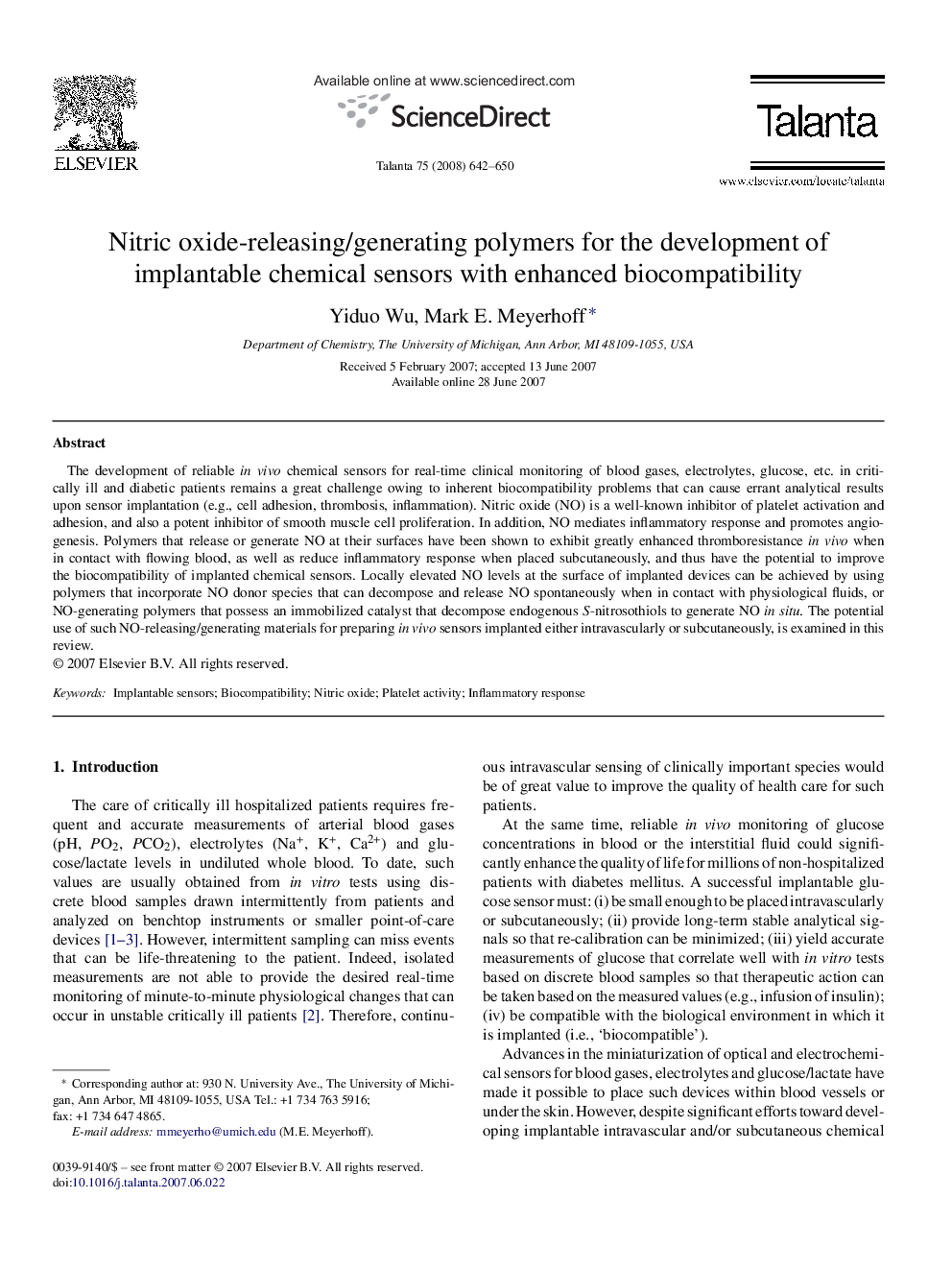| کد مقاله | کد نشریه | سال انتشار | مقاله انگلیسی | نسخه تمام متن |
|---|---|---|---|---|
| 1245567 | 969726 | 2008 | 9 صفحه PDF | دانلود رایگان |

The development of reliable in vivo chemical sensors for real-time clinical monitoring of blood gases, electrolytes, glucose, etc. in critically ill and diabetic patients remains a great challenge owing to inherent biocompatibility problems that can cause errant analytical results upon sensor implantation (e.g., cell adhesion, thrombosis, inflammation). Nitric oxide (NO) is a well-known inhibitor of platelet activation and adhesion, and also a potent inhibitor of smooth muscle cell proliferation. In addition, NO mediates inflammatory response and promotes angiogenesis. Polymers that release or generate NO at their surfaces have been shown to exhibit greatly enhanced thromboresistance in vivo when in contact with flowing blood, as well as reduce inflammatory response when placed subcutaneously, and thus have the potential to improve the biocompatibility of implanted chemical sensors. Locally elevated NO levels at the surface of implanted devices can be achieved by using polymers that incorporate NO donor species that can decompose and release NO spontaneously when in contact with physiological fluids, or NO-generating polymers that possess an immobilized catalyst that decompose endogenous S-nitrosothiols to generate NO in situ. The potential use of such NO-releasing/generating materials for preparing in vivo sensors implanted either intravascularly or subcutaneously, is examined in this review.
Journal: Talanta - Volume 75, Issue 3, 15 May 2008, Pages 642–650